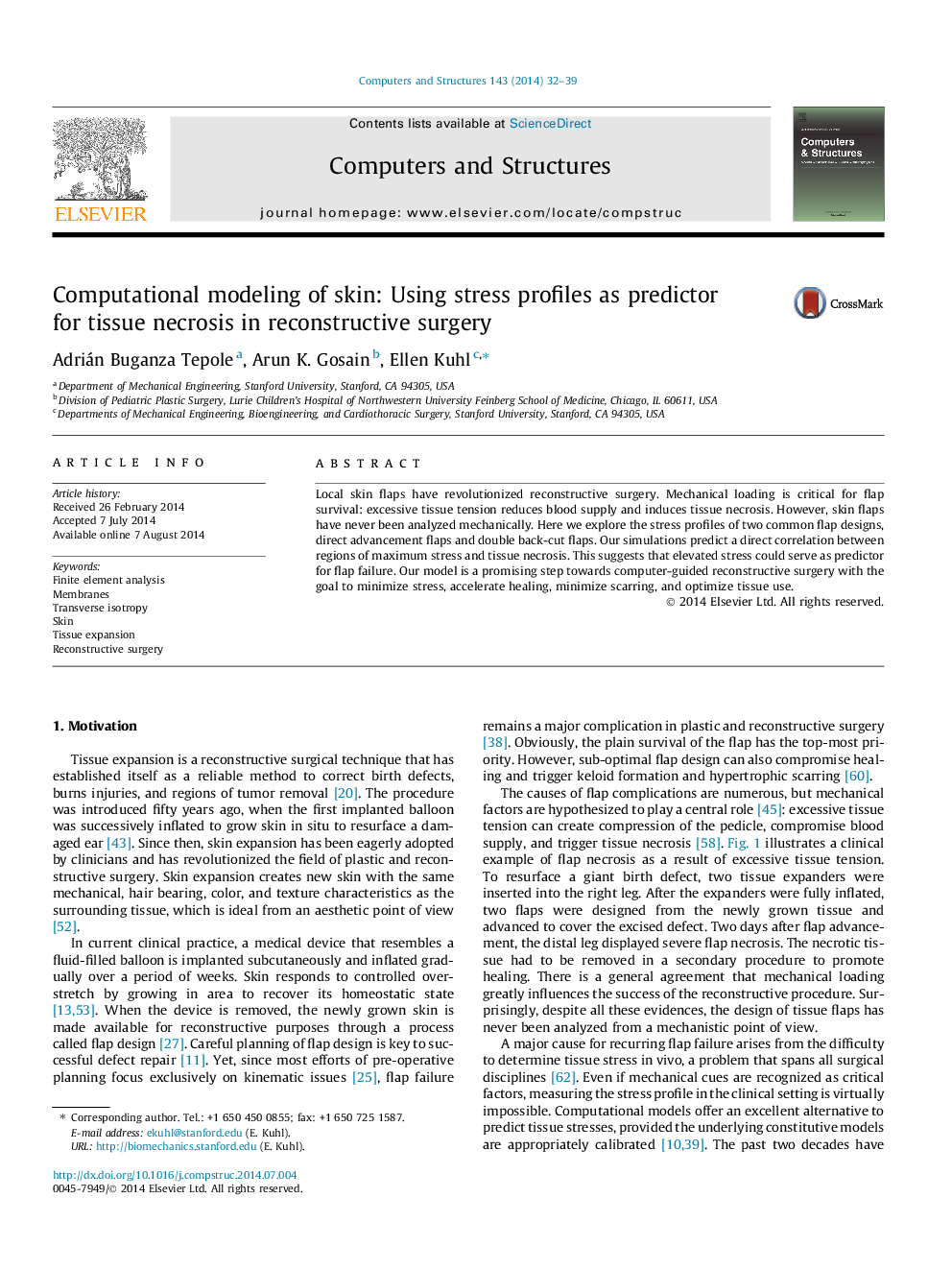| Article ID | Journal | Published Year | Pages | File Type |
|---|---|---|---|---|
| 509756 | Computers & Structures | 2014 | 8 Pages |
•Locally grown skin flaps for defect repair have revolutionized reconstructive surgery.•Excessive tissue tension reduces blood supply, induces tissue necrosis, and causes flap failure.•We explore the stress profiles of two common flap designs using finite element analysis.•Our model predicts a correlation between regions of maximum stress and tissue necrosis.•Computational models could help to accelerate healing, minimize scarring, and optimize tissue use.
Local skin flaps have revolutionized reconstructive surgery. Mechanical loading is critical for flap survival: excessive tissue tension reduces blood supply and induces tissue necrosis. However, skin flaps have never been analyzed mechanically. Here we explore the stress profiles of two common flap designs, direct advancement flaps and double back-cut flaps. Our simulations predict a direct correlation between regions of maximum stress and tissue necrosis. This suggests that elevated stress could serve as predictor for flap failure. Our model is a promising step towards computer-guided reconstructive surgery with the goal to minimize stress, accelerate healing, minimize scarring, and optimize tissue use.
